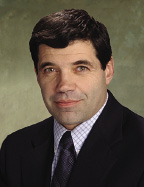Traffic congestion. No one wants it. It sounds painful. It is probably the most common complaint anywhere a development project is proposed: "There will be congestion!" Of course nobody likes to be delayed-whether at the airport, at the doctor's office, or even on the phone, so, logically, traffic congestion must be something to avoid. But at what cost? And what is "traffic congestion" anyway? How is it measured? How does it happen?
Technically, traffic congestion happens when the volume of traffic approaches a roadway's capacity. But that just begs the question: What volume? What capacity? To have congestion in the first place, there has to be something nearby that attracts a lot of people-a center of employment, a popular shopping area, sports and entertainment centers, etc. Whatever the original attraction, the mere presence of so many people will attract other activity - schools, restaurants, hospitals, and so on, which in turn will attract even more people. So congestion is actually a measure of success: but sooner or later, when the road network becomes saturated, there will be congestion.
Congestion also means density. When there are more people living and working in a compact area, there are lots of benefits that tend to offset congestion issues: For the environment, there is less pressure on nearby natural areas - less "sprawl." With more compact development, it is more practical to walk or bike from place to place. Mass transit becomes economically viable. And perhaps most importantly, public infrastructure-not just highways, but sewers, water and other basic necessities becomes more efficient and less costly to build and maintain, at least on a per capita basis.
That brings us to the other part of the congestion equation: road capacity. What determines that? As traffic increases, the first stress points are intersections. Intersection capacity can be fairly easily increased-at first - by adding turn lanes, signals or roundabouts at major intersections. After that, it starts to get difficult, as the roadways themselves need to be expanded. In addition to the cost and disruption of adding miles of extra lanes, property takings along one or both sides of the road are often needed as well.
At what point does it become necessary to expand road capacity? engineers and planners commonly speak in terms of level-of-service criteria "A" thru "F." But the difference between "acceptable" and "failure" levels of service is only 15 seconds or so of average delay. Is it worth spending millions to save so comparatively little time, especially given the potential benefits of allowing higher density development?
Is it at the point when congestion discourages investment - when, as Yogi Berra put it, "No one goes there anymore - it's too busy"? But a quick look at land prices in even notoriously congested areas reveals that just isn't the case. If anything, the opposite is more likely to be true. High traffic counts generally encourage investment. It seems even relatively high levels of congestion don't seem to have much negative effect. Is it a safety issue? Generally speaking, other than on high-speed roadways, more congested conditions lead to lower average speeds. There may be more fender-benders, but fewer serious accidents and fatalities.
In today's world, the single-occupant vehicle or SOV, in terms of cost per vehicle-mile and environmental impacts, is one of the least efficient ways to get around. So building expensive highway projects for the sake of the SOV is not an efficient use of taxpayer money. Just as empty planes cost airlines money, so too empty highways can be a costly luxury. However for the alternatives, such as mass transit, a high population density (and - therefore - congestion) must already be in place.
What about the future? Already in the news are actual examples driverless cars that drive themselves, park themselves and can pass through busy intersections without stopping. This means that in the not-too-distant future, there will be even less need for additional highway capacity since more cars can travel the same roads with less delay. There will be less accidents and traffic jams, as well as increased mobility for the elderly and disabled. Perhaps even owning a car will become unnecessary as you are able to summon a driverless taxi in just minutes that can pick you up, take you anywhere, and then zoom off to pick up its next fare.
It could well be that too much emphasis is being placed today on increasing roadway capacity for its own sake, regardless of the cost of doing so. Perhaps we would all achieve some substantial social benefits by allowing our roadways to become a little more congested before insisting on costly capacity improvements, and hasten the day when the whole concept of congestion has become a thing of the past.
Robert Duval, PE, LEED AP, is president and chief engineer of TFMoran, Inc., Bedford, N.H.
Tags:
In defense of traffic congestion: There are lots of benefits that tend to offset issues
January 23, 2014 - Retail









